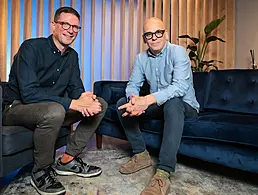Which format do you opt for when creating your CV? Do you stick to a standard model or do you try to stand out with something different?
Your CV will be your first communication with a potential employer. As it’s highly likely that your CV will be one of many vying for attention, the golden rule is: make yours stand out.
But how exactly should you do that? How do you make sure your CV grabs the attention of a recruiter?
A different style will often get you noticed, but the jury is out as to whether or not you should go bold and creative with your CV, or if you should stick to a traditional format and make yourself stand out some other way.
Here, we look at the pros and cons of creative and traditional CVs to help you make the right decision as well as a few tips to execute each style well.
Traditional CV
Having a traditional format has one obvious drawback: it will probably look similar to a hundred other CVs that pass through the recruiter’s hands. That means you have to let the information and your experience speak for itself.
While the only downside is the risk of getting lost in the crowd, it is a significant one. Just because you stick to a traditional format, it doesn’t mean it’s the right one.
If putting your work in chronological order means your best skills get sent further down, this will definitely lessen your chances of getting the job.
However, a traditional CV is safe, too. Unless you’re applying for a job that explicitly asks for something different, a traditional format won’t annoy the recruiter. Your CV will look like it’s supposed to, and they will read it expecting to be blown away by the words and only the words.
If you’re sticking with traditional, make sure your CV is still clean and concise. Exercise brevity when describing achievements and skills. Don’t use five sentences when you could use one. You can always go into more detail at the interview process.
Creative CV
Creative CVs might seem like a great idea at the time, but they could possibly annoy potential recruiters if not executed correctly.
However, if the company explicitly asks for an application that’s different from the norm, honour its request.
Naturally, there are many levels of producing a creative CV. You can use colour, graphics and logos to make it different and show off your design skills. These will grab attention for sure, but will it be the right kind of attention?
When thinking of a creative CV idea, think about how it looks to the recruiter or employer. Will it be easy for them to read? Can they pick out the important information easily?
For each creative element that strays from the traditional format, ask yourself what the point of that element is. Does it make your CV cleaner? Does it showcase an important skill? Or are you simply trying to stand out for the sake of it?
Knowing your audience is important when sending in a creative CV. If you’re applying for a design job, it might be the best way to showcase your talent. On the other hand, a professional services firm would be more likely to seek the traditional format. Don’t make your creative CV your go-to application. Have a traditional version on standby.
When making your CV creative, flashy or different, make sure it doesn’t give recruiters any extra work when reading it. Ensure that colours and graphics aren’t distracting, and that the print is still easy to read.
If you’re unsure, give your CV to someone else to look at before you send it to potential employers.




